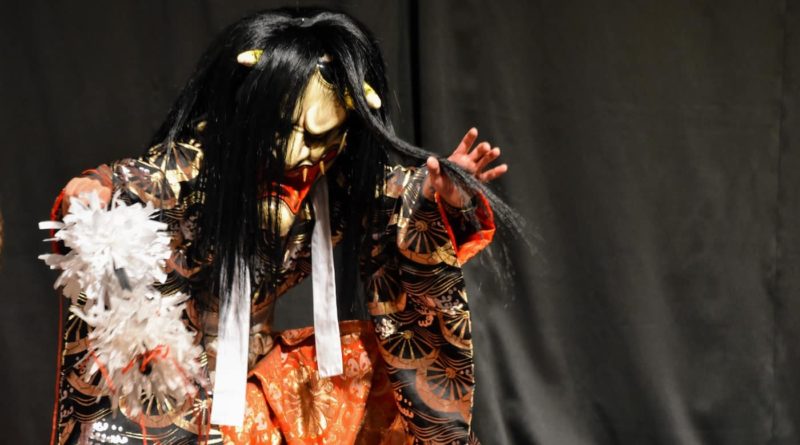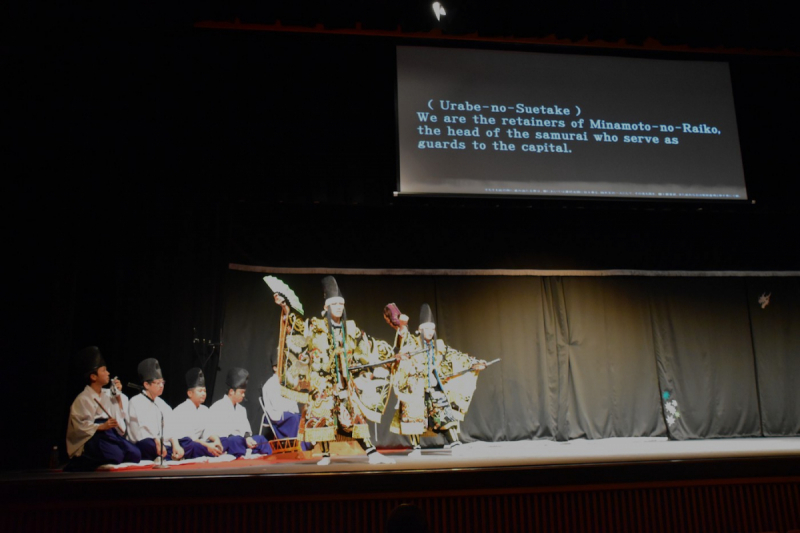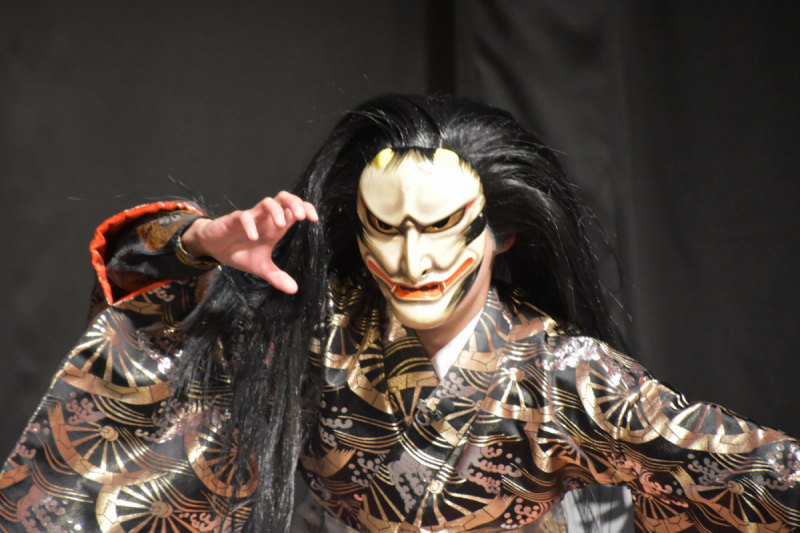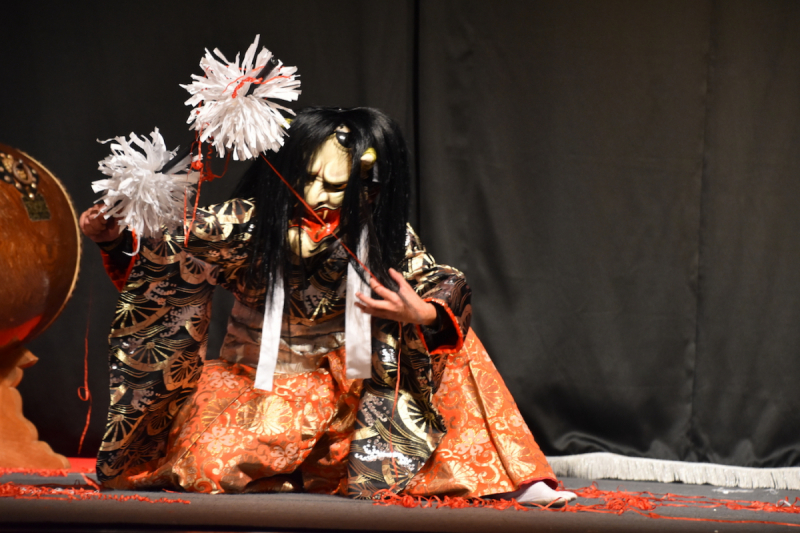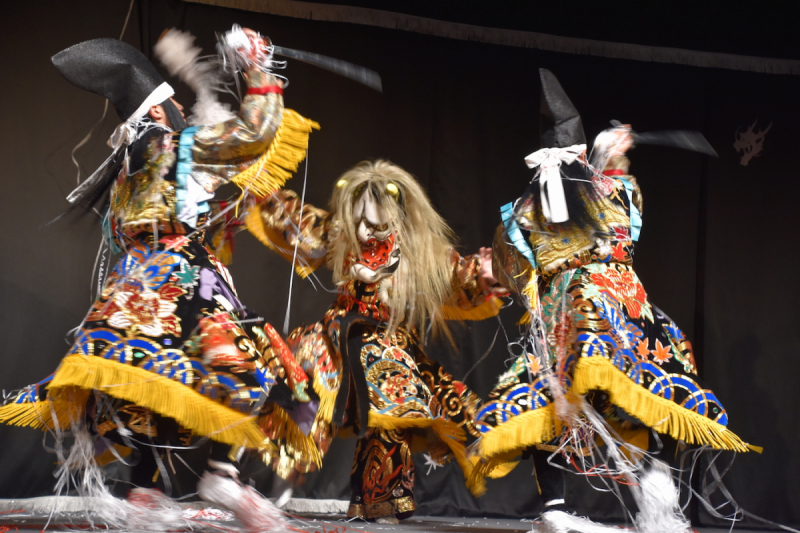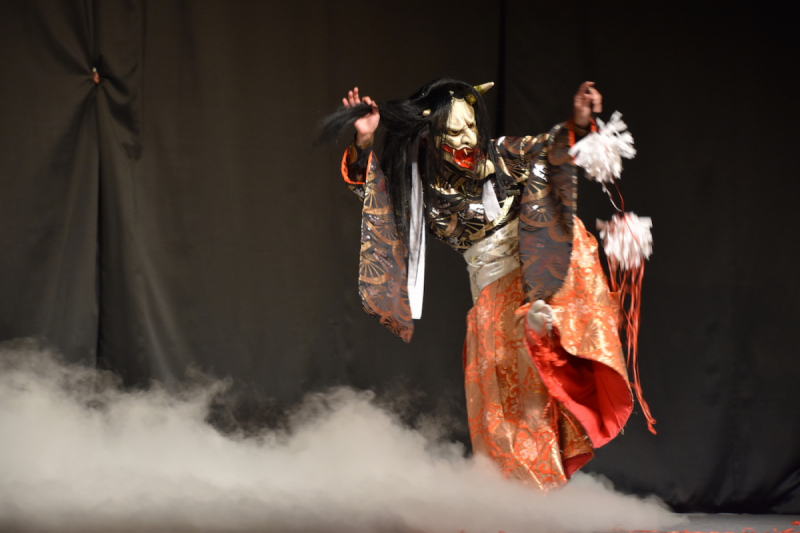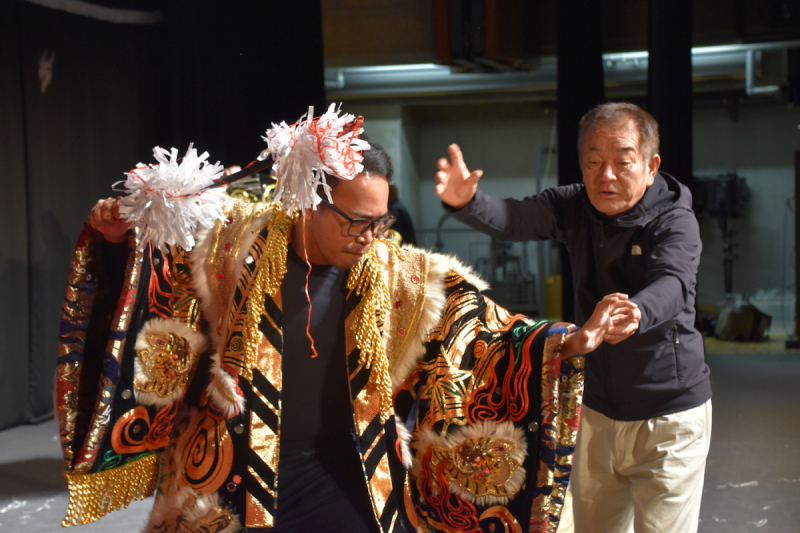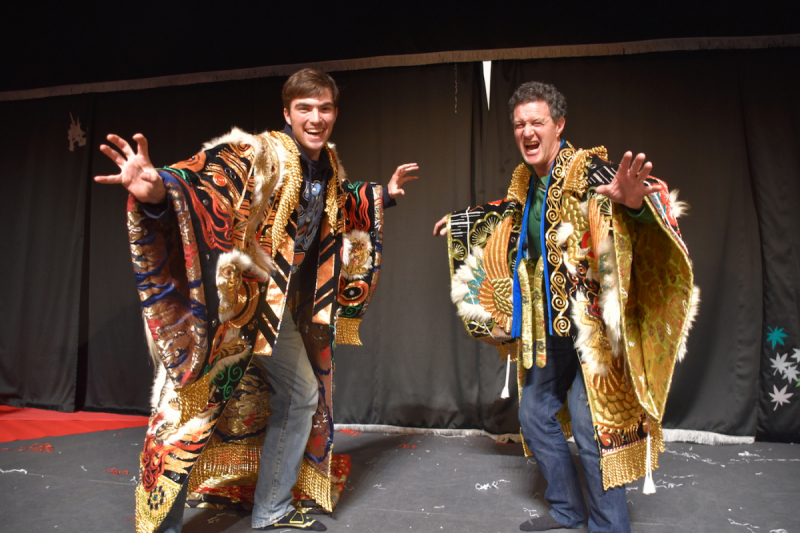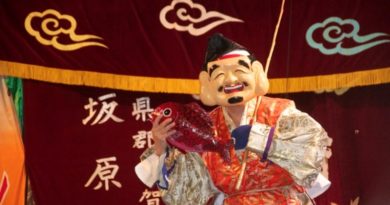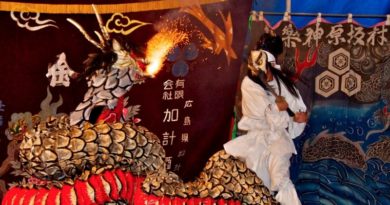An Evening of Kagura Returns to Take Center Stage
After a month-long hiatus, An Evening of Kagura is back and better than ever in its new home, the Hiroshima Prefectural Citizen’s Culture Center (otherwise known as the Rijo Kaikan). The Culture Center is a huge step up from the cozy basement of the Hiroshima Prefectural Art Museum where performances were held for the past seven months. Finally! Gone are the distracting side monitor subtitles and carpeted floor that served as a stage, and here to stay are tiered seats, a real, raised theatrical stage complete with lights, and an overhead screen for subtitles that keep the audience in the performance. The Culture Center is also more than twice the size of the Hiroshima Prefectural Art Museum’s basement, giving the event plenty of room to grow. This is the way that kagura was meant to be performed.
Kicking off the inaugural performance was the Higashiyama Kagura Troupe from Kita-Hiroshima with their rendition of Tsuchigumo (Earth Spiders). Originally adapted from Kabuki, Tsuchigumo is the classic tale of a spider demon bent on revenge for wrongs suffered at the hands of the samurai commander, Minamoto-no-Raiko. The play opens with Raiko lamenting a mysterious illness that causes him to suffer day and night, an illness which we find out in Act 2 is the work of the spider demon.
Disguised as Raiko’s chambermaid, Kocho, the demon not only boasts about cursing Raiko with illness, but also that she plans to be rid of him once and for all by giving him poison disguised as medicine. However, Kocho’s plan hits an unexpected bump when Raiko’s loyal retainers, Urabe-no-Suetake and Sakata-no-Kintoki, arrive in Act 3 and the four of them end up spending the night in Raiko’s manor.
While Kocho successfully manages to trick Raiko into drinking the poison, she also ends up revealing her true identity as a demon and, to make matters worse, is slashed by the weakened Raiko with his prized heirloom sword, the Hizamaru. While the demon flees into the mountains, Raiko’s retainers rush to the aid of their lord, drawn by all the commotion. Raiko orders them to follow the trail of blood left by the demon and destroy her, entrusting to them his sword.
The final showdown between the demon and Raiko’s retainers takes place deep in the mountains, and, as is to be expected, good triumphs over evil. With the spider demon slain, Raiko’s health returns to normal and peace is restored.
The Higashiyama Kagura Troupe brought a decidedly theatrical flair to the performance not just in terms of eye-catching costumes (and costume reveals!) and perfected makeup, but also props. Aside from a giant kagura demon mask complete with a long and untamed mane of black hair, the troupe also used a flurry of white paper streamers for spider webs that rained down spectacularly on our heroes, and red paper streamers to signify the blood from the wound that the demon spider suffers at the hands of Raiko.
Dramatic red lighting was also used to play up the drama, something unseen during previous performances. The fight scenes were perfectly choreographed, swords flashing along with the beat of the taiko drums as the spider web streamers strewn across the stage got caught in the crossfire. Thankfully none of the players got tripped up by the paper streamers which wound themselves around their legs as they twirled in the frenzy of battle.
The star of the show was, without a doubt, the spider demon. The transformation from demure chambermaid to crazed, desperate monster was captivating and punctuated by not only by increasingly violent mannerisms, but also by a remarkable change of voice from soft spoken lady to the guttural growls and howls of an otherworldly demon. I was almost sorry to see the demon defeated.
Something else which stood out about the troupe was their young lead taiko drummer. In every other performance I’ve been to, the lead drummer has typically been an elderly gentlemen who leads not only the other musicians but also gives cues to the players on stage. But the lead taiko drummer seemed to be no more than high school or college age, a testament to the dedication and love of kagura found across generations in Hiroshima.
The post-show Q & A session is always an amazing opportunity for audience members to interact with the troupe. “Why a spider demon? Why not some other creature?” had the troupe leader at a good-natured loss for words and questions about how long costumes took to make inspired gasps of admiration when he revealed that one of the 100% hand-sewn costumes can take up to 5 years from order to delivery. These interactions also make the commemorative photo session that follows all the more meaningful – audience members can appreciate all the hard work that goes into the tailoring and creation of the lavish stage costumes on a whole new level.
Revamped and ready for the new year, you can catch an Evening of Kagura through March 2019 at the Hiroshima Prefecture Citizen’s Cultural Center at 6pm.


